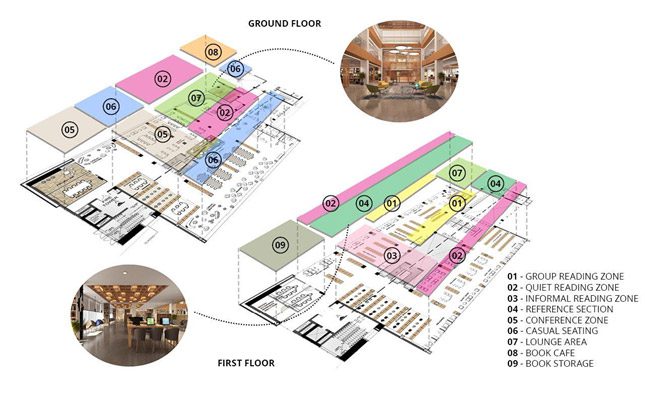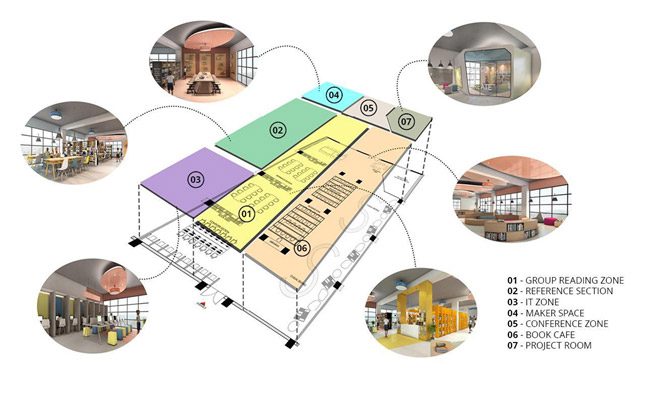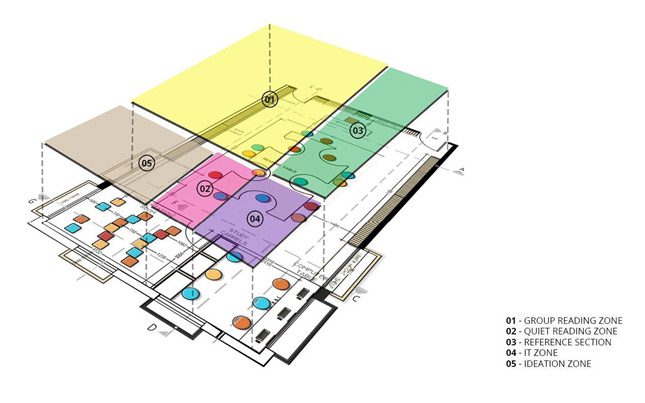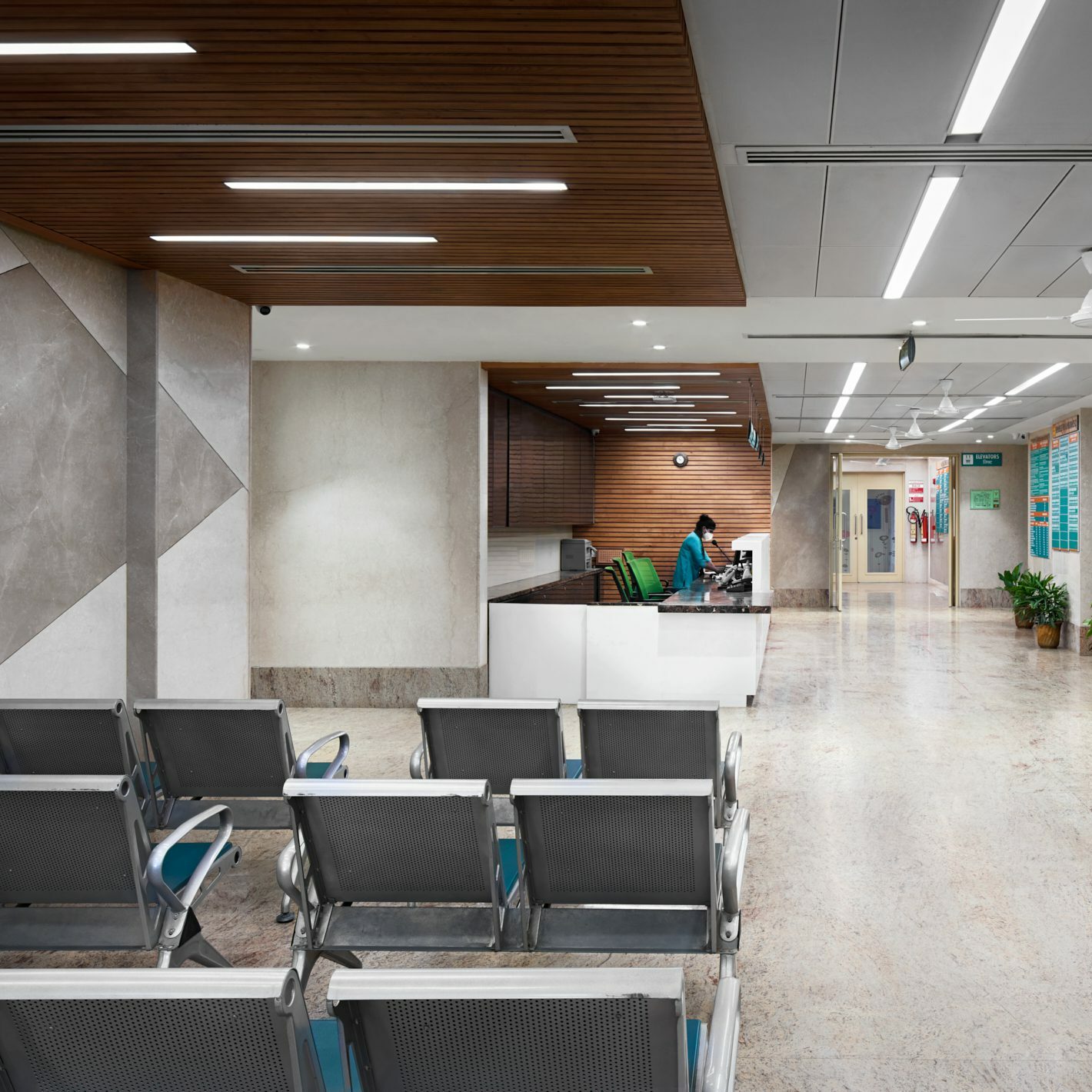Reimagining Libraries as Realms of Learning
For centuries, libraries have played a huge role in the preservation and propagation of culture. As the treasure trove of knowledge, libraries have been responsible in part for written language itself being created and refined. In fact, many nuanced systems of documentation and organisation of data can trace their roots back to library science.
That said, the nature of information is changing. Books are no longer the sole standard of epistemic credibility, and the written word itself is mutating in its expression as we enter a digital age. Bite-sized information available within seconds of request is the antithesis of book-based research – does this mean that the institutions tasked with collecting books are facing their end?
Architectural morphology would indicate the opposite. While knowledge continues to change hands and forms, the need to make it available to a wide audience remains constant. Through years of research as well as hands-on application at varying scales, we have devised a framework for transforming libraries that includes the following:
Flexibility and Adaptability
In order to encourage collaboration and exchange, libraries must adopt agile layouts. Drawing from Dr. David Thornburg’s theory of archetypal learning spaces, the library precinct can be re-imagined as a composition of three zones. These include:
- Instructional spaces, where one absorbs information through direct engagement
- Collaborative spaces, where users convene to share ideas as well as work together
- Private spaces, where one can retreat to boost focus and engage with material at an individual level
Modern library spaces must include a holistic mix of these spatial typologies to ensure that students have their pick of learning environments best suited to their needs and temperament. These typologies can be interpreted in the form of study halls, discussion areas, activity floors, reading nooks and quiet corners, coming together as a diversified whole.

Library at Amity University, Mumbai | A group reading zone forms the core of the library, with a variety of activity areas and collaborative spaces placed around it.
The application of Dr. Thornburg’s theory transforms traditional libraries into Learning Commons, which prioritise user engagement and dynamic exchange over silent readings typically associated with libraries. By focusing on zone creation, Learning Commons ensures that the learning needs of each user are met without hindering another’s.
Agility in library design can be further interpreted through spatial strategies that allow for user-led customization, such as movable partitions and modular furniture. Modern library science is heavily influenced by data trends and technological advancements; to keep pace with these innovations, libraries must be designed in a manner that accommodates user-based and device-based changes that are bound to occur over time, with minimal disruption.
Alternative Modes of Learning
Sensory engagement is a crucial aspect of neurological development. Keeping this in mind, we have been advocating for the inclusion of Maker Spaces in library precincts across a variety of projects.
Designed to enable tactile learning, Maker Spaces are created keeping two key ideas in mind:
- Top-down instruction models are inefficient when utilised in isolation.
- Libraries must enable interaction between users, in order to reposition themselves as crucial cultural institutions.
In view of these ideas, Maker Spaces emerge as the perfect morphological complement for traditional libraries. Incorporating coding stations, AV equipment, paper and 3D printers and traditional arts and crafts supplies, Maker Spaces encourage students to learn through action and collaboration.

Library at EuroSchool, Kharari | The traditional reading spaces of the school library have been supplemented by hands-on activity areas, including an IT zone, a project room, and a Maker Space.
By giving students the means to apply classroom learning to self-initiated projects, new-age libraries gain the capacity to encourage intellectual rigour. Not only is this methodology more effective at imparting skills among various age groups, it also encourages the perception of a library as a vital community hub.
Integrating Technology
The technological intervention has dramatically transformed the interface between information and people. This is especially true for younger generations, who are adopting tech literacy with gusto.
A global study conducted by OECD in 2018 focused on the correlation between integrating technology in learning environments and classroom output. The results were highly promising, placing students’ education within tech-integrated environments upto a full grade level ahead of their non-tech using peers. Among Asian students especially, the use of data projectors and internet-connected computers led to a rise in PISA scores by 42 points and 31 points, respectively.
As integrating technology within learning spaces gains momentum across India, libraries provide the perfect testing ground for these parameters. A variety of tech-based tools – digitised reference databases, eBooks, IoT-enabled workstations, interactive whiteboards and tablets – can be assimilated within the traditional library setup to encourage independent learning and exploration among students within a supervised environment.
Not only do these interventions contribute towards improved research and analytical skills, they can help streamline existing instruction models to improve classroom learning in the long run.

Library at EuroSchool, Pune | The provision of an IT Zone in the library precinct, in addition to solo as well as group reading zones, enable physical as well as digital research.
Integrating technology in libraries also eliminates the issue of availability and access, making it possible for students to use these resources at the time and pace of their own choosing. It allows for institutional inter-linking and resource sharing, greatly broadening the knowledge base that students can draw from – a model used successfully by New York public libraries.
Using cloud-based applications and mobile technology, limited availability of physical books and infrastructure will no longer restrict students from accessing the information they need.
While recent shifts in communication technology have decentralised the power of books, the same developments may be utilised to reinvent libraries in order to support learning across a wide spectrum of interests and abilities. At the school level itself, libraries can form the backbone of participative practices that nurture a scientific temperament as well as independence of thought.



